|
Winter at Grazer Kunstverein
7 December 2018 – 22 February 2019
Mehraneh Atashi
Flotsam, Jetsam, Lagan, and Derelict

Mehraneh Atashi, installation view of Flotsam, Jetsam, Lagan, and Derelict, Winter 2018, Grazer Kunstverein. Photography by Christine Winkler
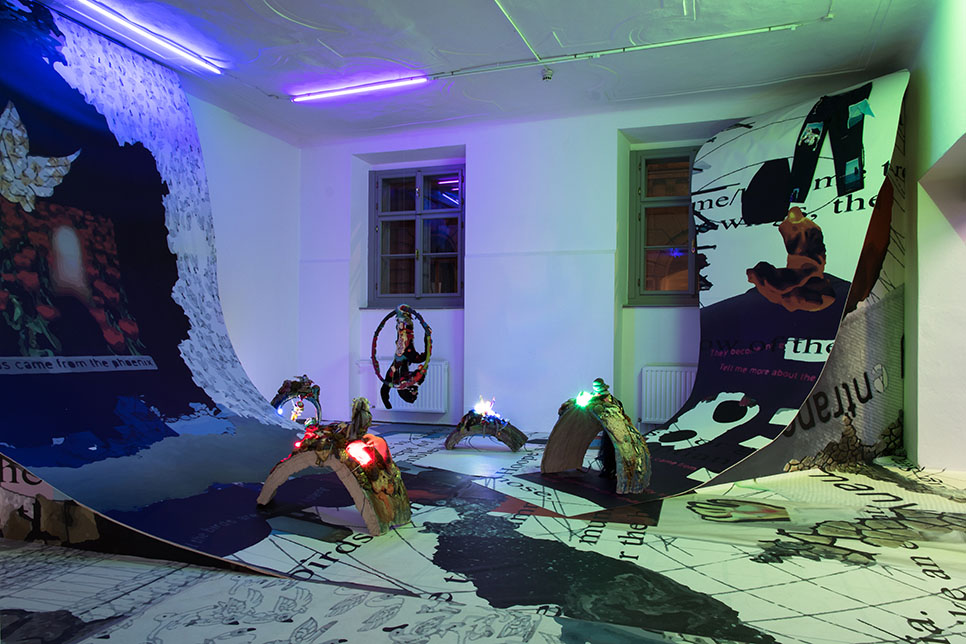
Mehraneh Atashi, installation view of Flotsam, Jetsam, Lagan, and Derelict, Winter 2018, Grazer Kunstverein. Photography by Christine Winkler
This major new exhibition by Amsterdam based artist Mehraneh Atashi combines her distinctive visual vocabulary with haptic sculptural components that envelope and inhabit the space of the gallery from floor to ceiling. Atashi is rising a phoenix from the ruins, taking The Canticle of the Birds, where plurality becomes singularity, as a starting point. Her coded sculptural world is collaged together with found and adapted footage and forms, set upon a stage of craters, dunes, caves and crevices. Through an exploration of the four kinds of shipwreck Atashi’s work chronicles a personal journey, creating a universe out of debris, a story out of scraps, patchworked together to reveal an inner ecology that is constantly transforming.
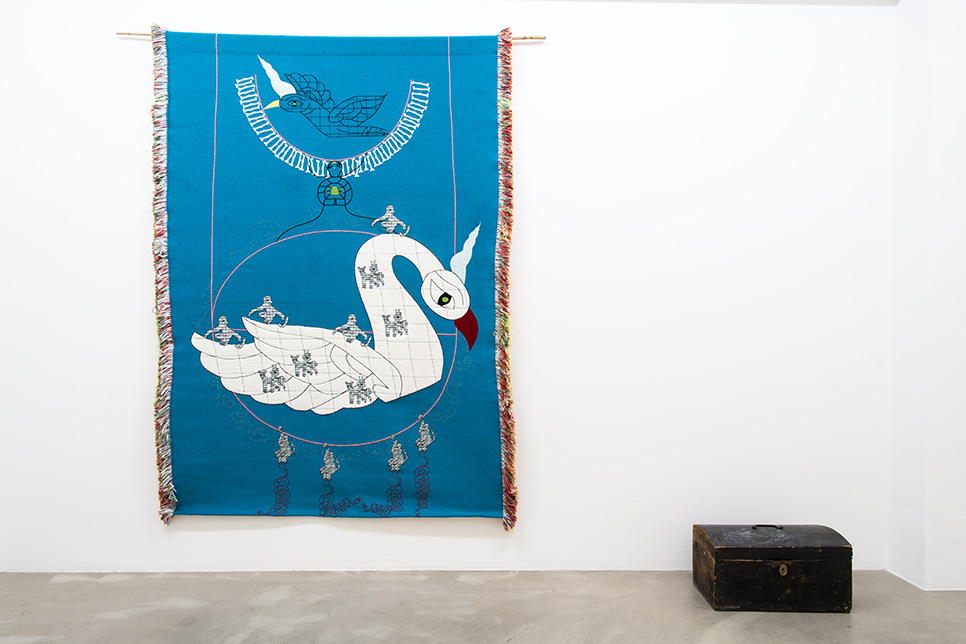
Mehraneh Atashi, Lapis Lazuli playground, 2017 and Angelika Loderer, Untitled, Winter 2018, Grazer Kunstverein. Photography by Christine Winkler
Lapis Lazuli playground
Textile and bamboo, located in corridor, 2017
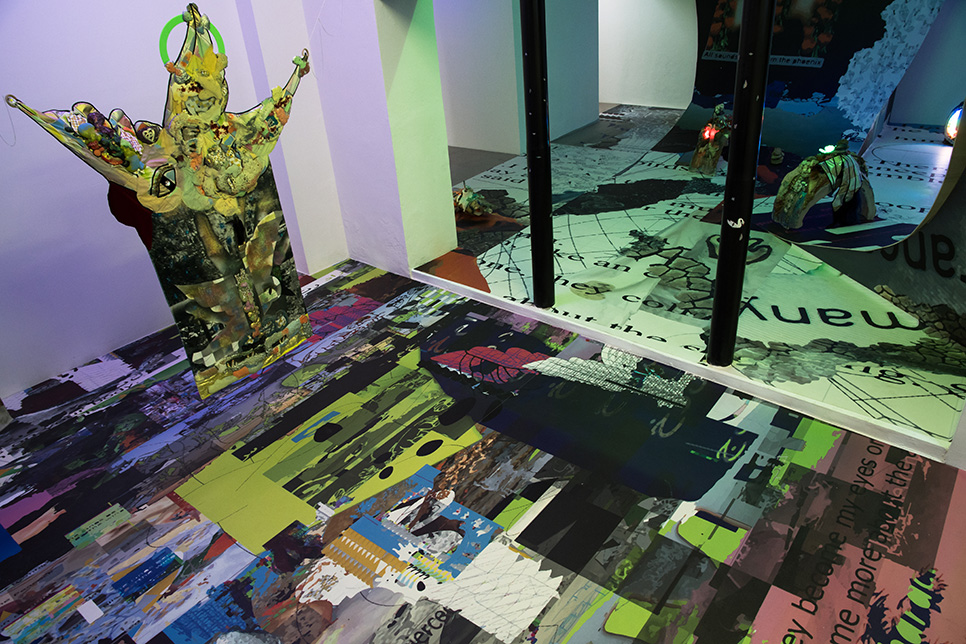
Mehraneh Atashi, installation view of Flotsam, Jetsam, Lagan, and Derelict, Winter 2018, Grazer Kunstverein. Photography by Christine Winkler
The elements of becoming
Installation across two rooms comprising vinyl floor covering produced by Fotoboden Berlin, architectural landscape designed by Lida Badafreh and Mehrshad Atashi, 2018

Mehraneh Atashi, installation view of Flotsam, Jetsam, Lagan, and Derelict, Winter 2018, Grazer Kunstverein. Photography by Christine Winkler
Flotsam, Jetsam, Lagan, and Derelict
Series of sculptural works with ceramics, resin-cast hands, resin-cast dildo, chain, foam, moss, bread dough, car LED lights, polaroid photo, copper sulphite, sunflower seeds, printed clothing, mist makers, textiles, acrylic paint, 2016–2018
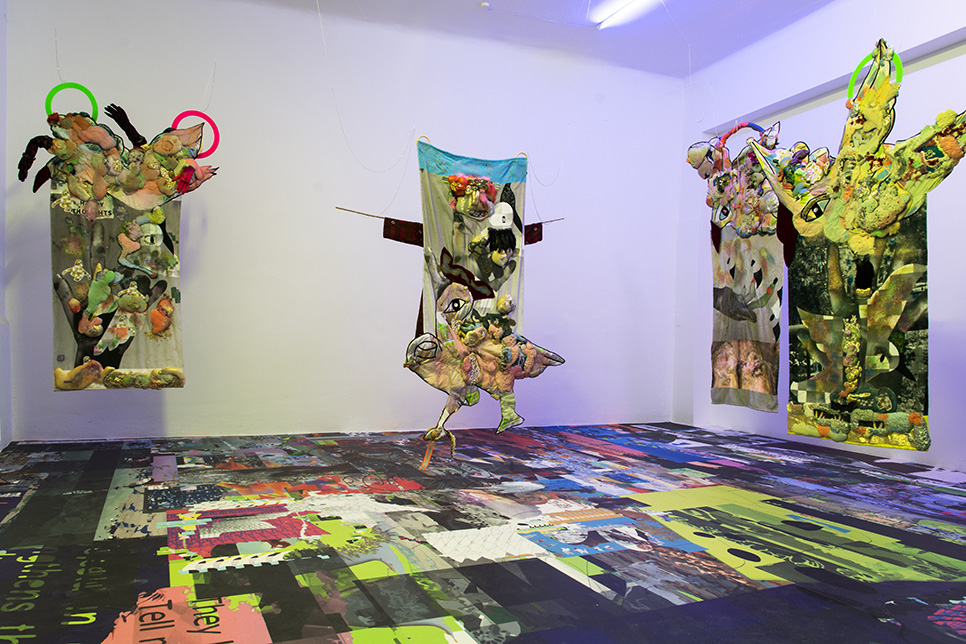
Mehraneh Atashi, The limits of the earth from shore to shore, Winter 2018, Grazer Kunstverein. Photography by Christine Winkler
The limits of the earth from shore to shore
Series of printed beach towels, quilted textiles, foam, hoola hoop, oil paint, mixed media, 2017

Mehraneh Atashi, detail views of Flotsam, Jetsam, Lagan, and Derelict, Winter 2018, Grazer Kunstverein. Photography by Christine Winkler
Mehraneh Atashi is an Iranian artist living and working in Amsterdam. Since her BFA in photography in Tehran, and her postgraduate education at the Rijksakademie in Amsterdam, she has developed a body of work consisting of assemblages, sculpture, photography and video. Shifting between conceptualism and materiality, imagery and iconography, her practice explores the possibility of becoming within static systems as well as concepts of gaze. Her work has been awarded with the Mondrian Stipendium for Established Artists in 2014, and presented in experimental solo and group exhibitions at de Appel Amsterdam, MU HKA Antwerp, REDCAT Los Angeles, Artissima Turin, HIT gallery Bratislava and Salzburger Kunstverein.
http://www.itsjustdelusionoftouch.com
Flotsam, Jetsam, Lagan, and Derelict by Mehraneh Atashi is generously supported by the Mondriaan Fund.
Angelika Loderer
Poems to Gadgets
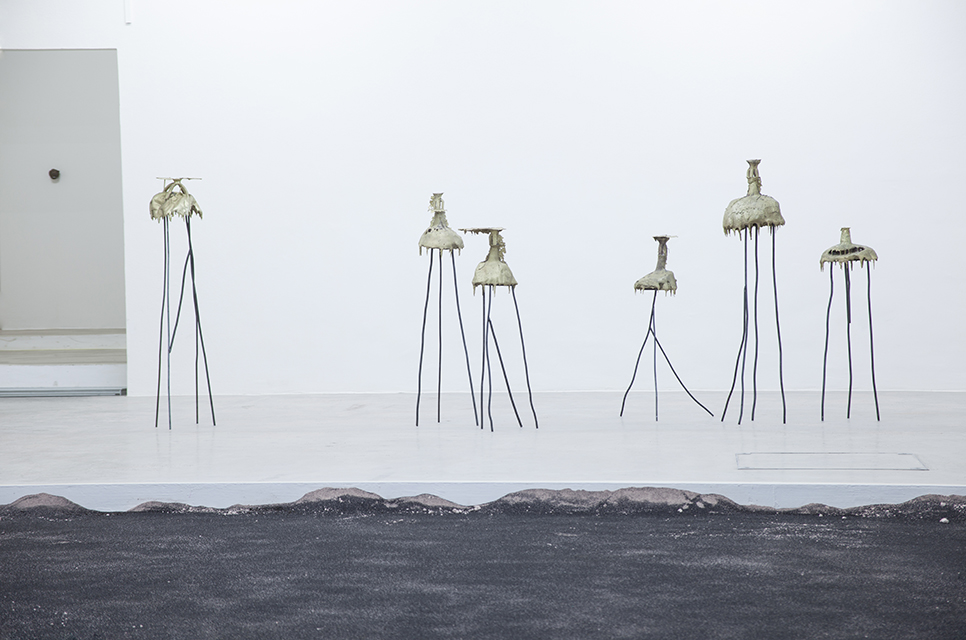
Angelika Loderer, installation view of Poems to Gadgets (icicles), Winter 2018, Grazer Kunstverein. Image courtesy of the artist
In her new exhibition, Loderer captures time by casting temporary models made from snow and ice into permanent sculptural works. The performative sculptural technique she employs to achieve this method materially records a moment of loss or change, while simultaneously destroying that which it recreates. Within this reflexive process, and throughout her broader artistic practice, Loderer tests and stretches the physical parameters of her materials. In this way she continues to mine ideas around positive and negative space, matter and its absence, the organic and the man-made, the past and some possible futures.

Angelika Loderer, Snowball (Edition), Winter 2018, Grazer Kunstverein. Image courtesy of the artist
Snowball (Edition)
Series of 10 unique pieces, patinated brass casting, 2018

Angelika Loderer, Poems to Gadgets (scatter piece), Winter 2018, Grazer Kunstverein. Image courtesy of the artist
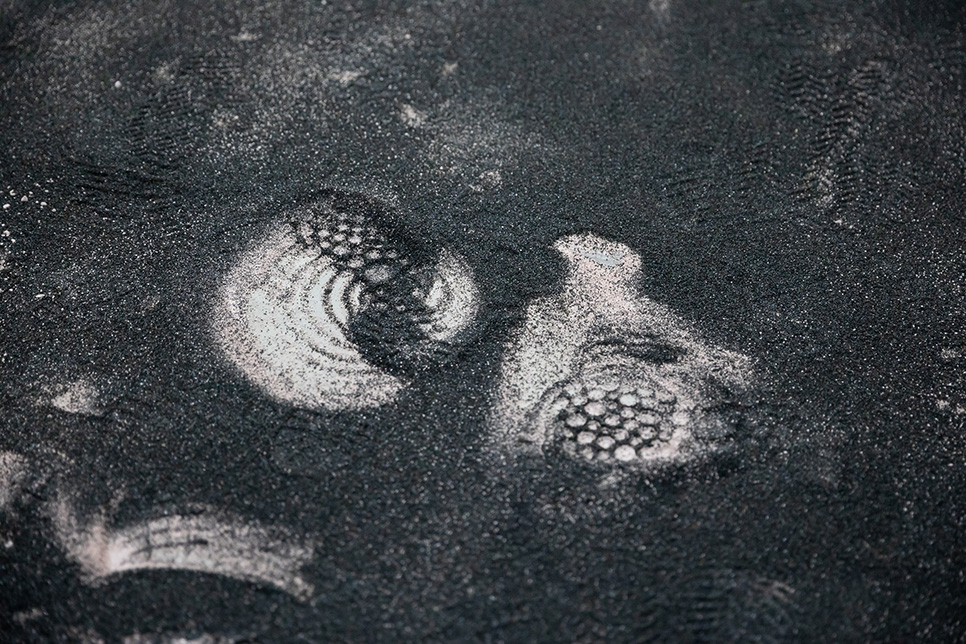
Angelika Loderer, detail view of Poems to Gadgets (scatter piece), Winter 2018, Grazer Kunstverein. Photography by Thomas Raggam
Poems to Gadgets (scatter piece)
Sand, 2018
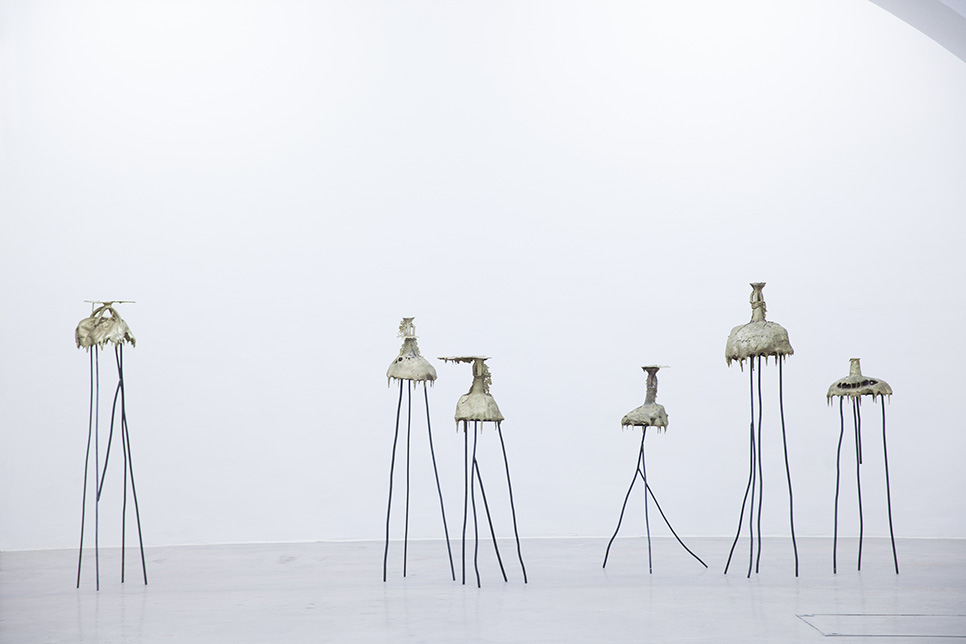
Angelika Loderer, Poems to Gadgets (icicles), Winter 2018, Grazer Kunstverein. Image courtesy of the artist
Poems to Gadgets (icicles)
Brass casting and steel, dimensions variable, 2018

Angelika Loderer, Poems to Gadgets (bug), Winter 2018, Grazer Kunstverein. Image courtesy of the artist
Poems to Gadgets (bugs)
Brass casting, dimensions variable, 2018
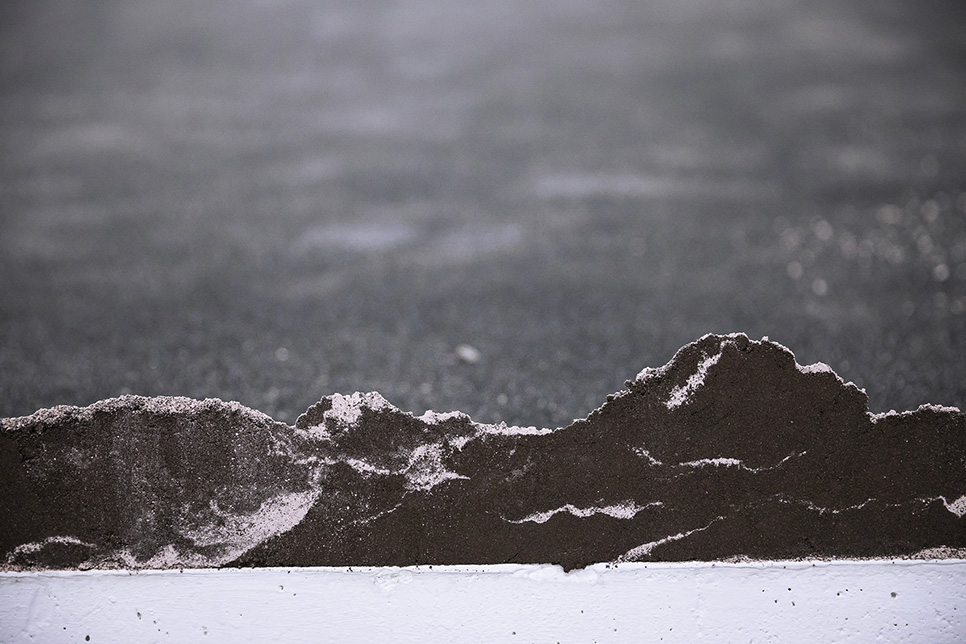
Angelika Loderer, detail view of Poems to Gadgets (scatter piece), Winter 2018, Grazer Kunstverein. Photography by Thomas Raggam
Angelika Loderer, born in 1984 in Feldbach, Styria, lives and works in Vienna, Austria. Loderer studied at the University of Applied Arts, Vienna, at Wimbledon College of Art, London as well as at Hendrix College, Arkansas, USA. Recent solo exhibitions include Galerie Sophie Tappeiner, Secession, Vienna, 2017; Salzburger Kunstverein, 2016; and Dortmunder Kunstverein, 2015. Her work has been shown in group exhibitions in Turin, Sydney, Berlin, Frankfurt and Mexico City. In 2016 Angelika Loderer won the Dagmar Chobot Prize for Sculpture. She has been nominated for the Kapsch Contemporary Art Prize 2018. Upcoming projects include participation in a group show about the young Viennese art scene at 21er Haus Vienna and a solo show at Galerie Sophie Tappeiner.
http://www.angelikaloderer.at
Triple Candie
If Michael Asher part IV
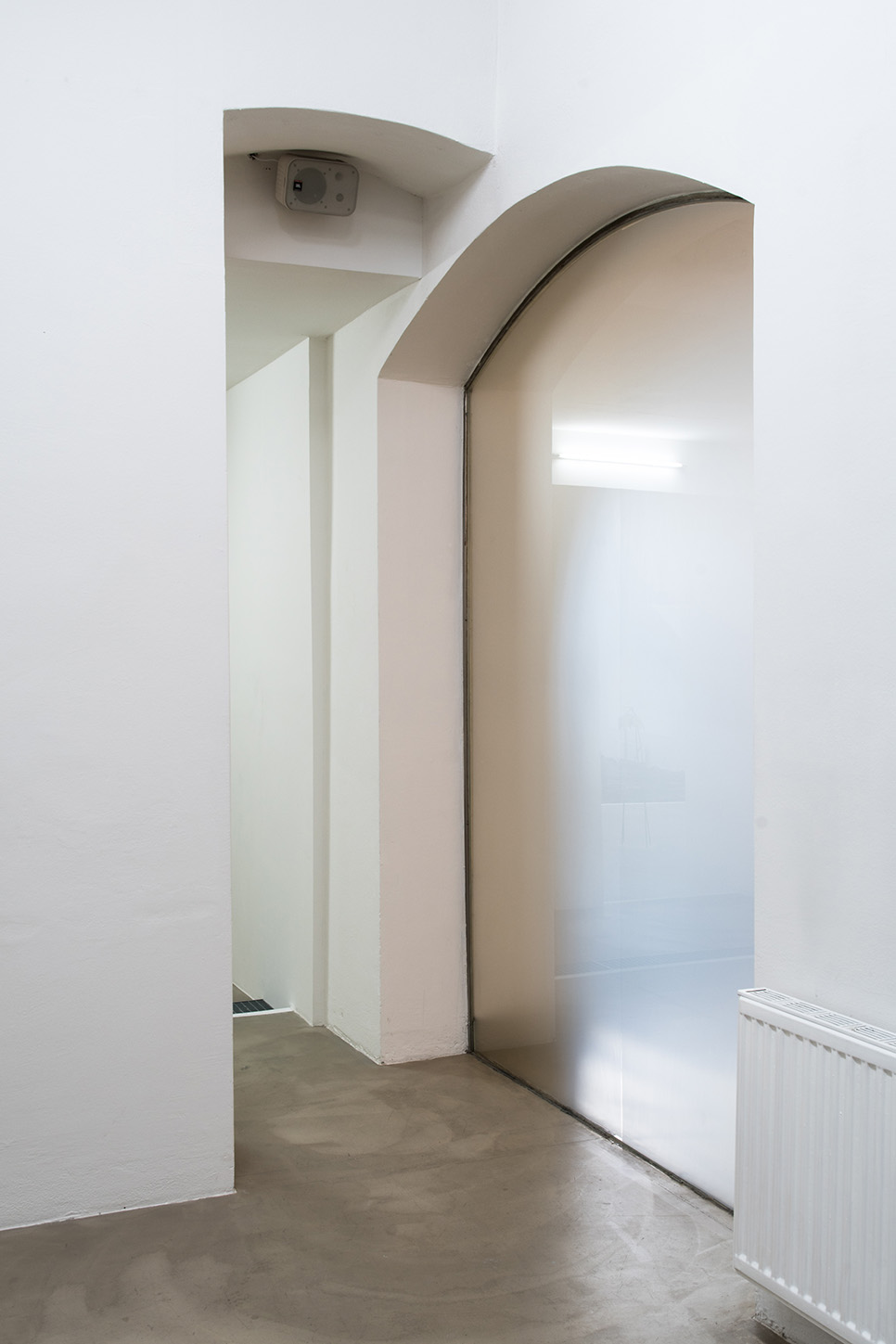
Triple Candie, If Michael Asher part IV, Winter 2018/19, Grazer Kunstverein. Photography by Christine Winkler
Part IV of Triple Candie’s engagement with Grazer Kunstverein is invisible. In a transitional corridor space between the two current exhibitions, far from the Grazer Kunstverein’s offices, a field recording capturing the daily sounds of administrative work, recorded on-site, plays at low volume from hidden audio speakers. Because the corridor contains artwork by two artists and the audio is unlabeled, its presence is interruptive, transgressive, and artless. It serves as a reminder of the often invisible office labour that undergirds the aesthetic experience without rendering it sacred. This idea has precedence in a number of Asher’s works, including “A Television Program” (broadcast on KGW in Portland, Oregon, in 1975), in which he turned the cameras back onto the activities in the production room for the half-hour segment; as well as his contribution to the MoMA exhibition Spaces (1970), which consisted of an empty room that collected for contemplation the ambient sounds external to it (footsteps and voices in the hall, traffic in the street). Part IV of Triple Candie’s engagement with Grazer Kunstverein (running 7 December 2018 – 22 February 2019) was accompanied by the following process note:
The entry rooms at the Grazer Kunstverein serve as the institution’s interface with the city. Bright, with natural light from floor-to-ceiling windows, they house a library; bleacher-style seating for talks and lectures; a hospitality bar; an information counter; and an office. The actions performed in these spaces are the necessary labor of sociability and administration. This is in sharp contrast with the rest of the building, where a serpentine sequence of diminishing and increasingly discrete galleries bears no trace of the institutional labor that makes the viewing of art possible.
For this project, we propose making palpable that which is hidden. We will introduce a field recording of the daily sounds of the Grazer Kunstverein’s office into a gallery already containing the work of artists Mehraneh Atashi and Angelika Loderer. The noise of an espresso machine, tapping of fingers on a keyboard, clack of a printer, and chimes of telephone ringtones will emanate, atmospherically, from hidden speakers. There will be no label in the gallery acknowledging the intervention.

Triple Candie, If Michael Asher part IV, Winter 2018/19, Grazer Kunstverein. Photography by Christine Winkler
Triple Candie is a US-based, avant-garde curatorial production agency that collaborates with museums and contemporary art spaces on exhibitions about art but generally devoid of it. From 2001 to 2010, it had a gallery in Harlem. Since then, it has presented projects in Australia, Europe, and the United States at such venues as Chateau Shatto, Los Angeles; Deste Foundation, Athens; Gertrude Contemporary, Melbourne; Museum of Contemporary Art Detroit; Project Arts Centre, Dublin; and Utah Museum of Contemporary Art, Salt Lake City. Surveys of Triple Candie’s work have appeared at FRAC Île-de-France/ Le Plateau, Paris (2012) and Addison Gallery of American Art, Andover, Massachusetts (2017).
http://www.triplecandie.org
|
![]()
![]()